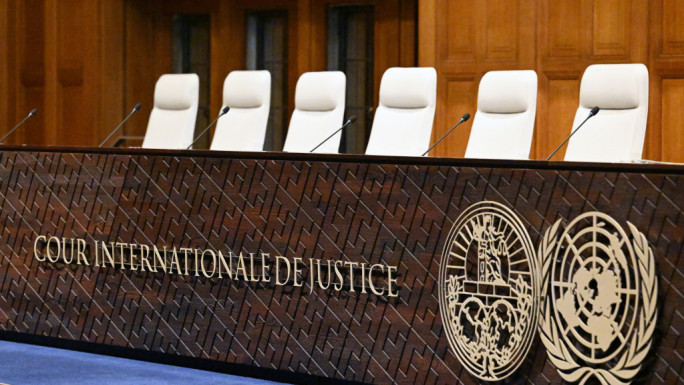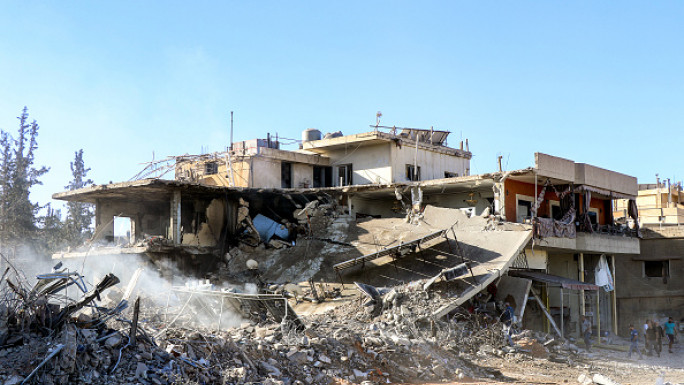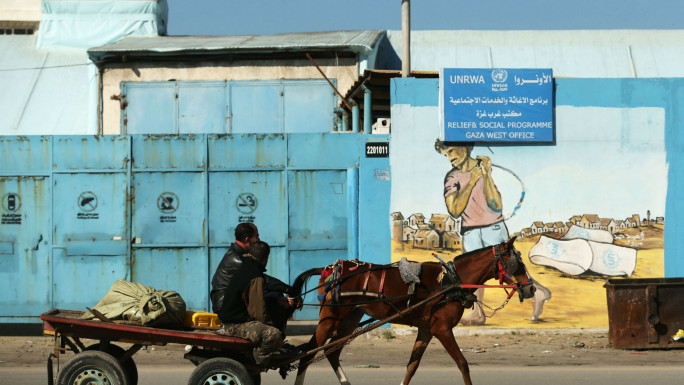
The 'Islamic State' brand is over
Shocking as these images are, they shouldn't surprise any of us.
Violence, corruption and sexual exploitation are the foundations upon which IS' military campaign and primordial vision of jihad were first built. These are the tactics which enabled the group to gain power and grow throughout 2014 and into 2015, and are the same tactics which sustained their dystopian campaign until now.
Statehood has always been central to IS. Controlling territory and upholding the trappings of a functioning state is as important to IS as their ideological appeal. It is what appears to have motivated so many foreign fighters to travel to Syria and Iraq in the first place and distinguishes IS from earlier, more ideologically focused jihadist movements.
The loss of Raqqa, the capital of their self-declared caliphate, was itself hugely symbolic. It not only represents a loss of resource and power, but exposes deeper cracks within IS' own ranks.
This includes reports of infighting between local and foreign fighters. In the liberation of Raqqa, foreign fighters were largely exempt from the deal granting the evacuation of militants and their families from the city. Many were left feeling resentful that their Syrian counterparts were given permission to leave while they were left behind.
Divisions between "local" and "foreign" fighters have persisted for some time, not only in Raqqa but in their one-time Iraqi stronghold of Mosul, as well as in Tal Afar and Hawija.
 |
The illusion of a united cause that its propaganda machine once promoted now lies shattered under the hammer of hypocrisy |  |
While its primarily Iraqi leadership clung to power, ethno-national biases among other militants never ceased: Syrians felt maligned that foreign fighters were paid more and treated better, Western foreign fighters were exploited for their use in propaganda and there are reports that inexperienced African and south Asian foreign fighters are treated particularly badly, acting as cannon fodder or as quasi-servants to other militants.
Twitter Post
|
The exposure of these divisions is important for several reasons. First, splits weaken their military strength leaving them ever more vulnerable to spiralling defeats. Second, infighting exposes their regime as one based on manmade power, riven with division and hierarchy – not unity.
Given that IS promoted itself as the defender of Sunnis, treating all men under Sharia as equals, the illusion of a united cause that its propaganda machine once promoted now lies shattered under the hammer of hypocrisy.
But there is another reason why these reports are so damaging. Reports of infighting, division and defections have over time corroded IS' formerly powerful brand. While IS once excelled in selling a vision of its unity, this is clearly no longer the case.
Read more: Hizballah denies Saudi Arabia's accusations, declares end of IS
After all, we know the extent of their brutality because they wanted us to see it. Their consistent use of distinctive imagery, particularly of Western recruits and children for propaganda, is chilling. It has also driven their recruitment of young extremists: in 2015, at the height of the group's recruitment drive more than 20,000 foreign fighters are thought to have travelled to Syria after being radicalised online.
IS developed its own multi-lingual propaganda centre al-Hayat, spewing online magazines so that it could explicitly target recruits across the world, using social media and internet chat-rooms to sell a fantasy world of adventure, purpose and solidarity. IS clearly understood early on that its strength did not lie purely in the military sphere, but within the virtual one.
The efficacy of their propaganda machine is dwindling along with their ability to spin their defeats as successes. Propaganda output has dropped by almost two thirds since 2015 and as the territory they occupy continues to shrink across Iraq and Syria their narrative has shifted dramatically: statehood and governance have been replaced with messages of sacrifice, hardship and a long commitment to jihad.
 |
Some could be forgiven for assuming the war against IS is approaching an emphatic end point |  |
Twitter Post
|
The vast majority of its media outlets are no longer functioning, reduced to a handful of central offices. They have also missed the publication date of their infamous propaganda magazine for the first time.
Some could be forgiven for assuming the war against IS is approaching an emphatic end point. But we must not fall into the trap of thinking it is game, set and match.
Thousands of militants remain in Iraq and Syria and it is likely that IS will respond to territorial defeats by returning to their insurgent roots. Even in Raqqa, despite an official declaration of liberation there is a mood of caution about what the future holds. If not IS, then who, or what?
The significant loss of territory may not mark the final nail in the IS coffin, but it does signify the closing of a significant chapter in IS' story, with those to come characterised by a weaker force and a damaged brand.
It also signifies that more than ever, this is not only a war over territory but a war of the online world where the weapons of propaganda, radicalisation and extremism rage on. This battle is taking place on screens in bedrooms around the world, far away from the battlegrounds of Syria. This includes targeting vulnerable minds, grooming them with poison online. To truly defeat the terrorists, they must be defeated in both battles.





 Follow the Middle East's top stories in English at The New Arab on Google News
Follow the Middle East's top stories in English at The New Arab on Google News


